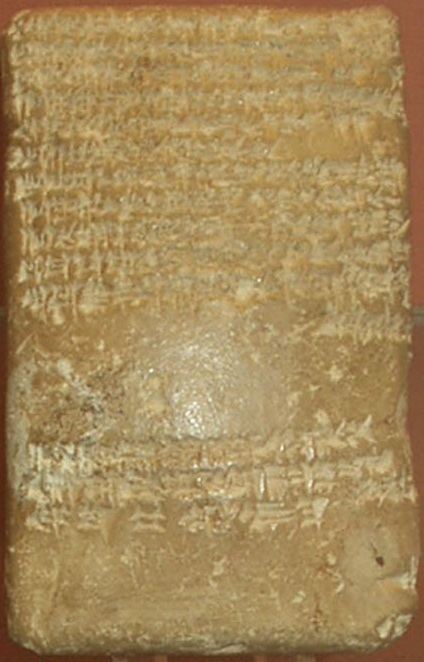 | ||
The cuneiform bi sign, also pí, and used for other syllabic forms, as well as a sumerogram, is a common use syllabic and alphabetic cuneiform sign used in both the mid-14th century BC Amarna letters and the Epic of Gilgamesh. In the Amarna letters, it is sometimes used for the spelling of the archers (Egyptian pitati), 'pí-t(x)-t(x)', an often requested need from the Pharaoh in the vassal state sub-corpus of the letters.
As a sumerogram, (capital letter (majuscule)), sign bi is used for KAŠ, Akkadian language for "šikāru", beer.
The following linguistic elements for bi are used in the Epic:
bébigaškašpíKAŠ, sumerogram: "beer"The bi sign's usage numbers in the Epic of Gilgamesh are as follows: bé-(25 times), bi-(190), gaš-(1), kaš-(12), pí-(2), KAŠ-(1).
Use of pí, Egyptian archers
The archers were part of the Egyptian army, and often requested by the Canaanite vassal city-states, when writing to the Pharaoh in the Amarna letters. They were named the pitati, Akkadian language "piṭātu", "troops of soldiers", and spelled in a variety of ways, often starting with the bi sign as pí.
A partial listing of spellings of "ERIM.MEŠ-pitati", by Amarna letter:
